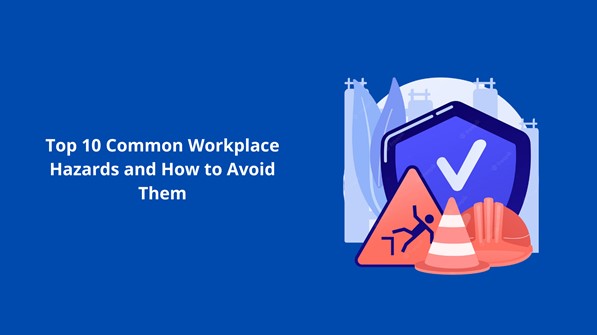A fundamental duty of employers and employees is to ensure health and safety at work. Organisations must efficiently identify and handle frequent workplace dangers to prevent accidents, injuries, and diseases. Understanding the main workplace dangers and putting preventative measures into place is essential, as IOSH Training gives people the information to navigate occupational safety. To promote Health and Safety in the Workplace, we’ll explore the ten most prevalent workplace risks in this post and offer tips on preventing them.
Understanding Health and Safety in the Workplace
Understanding the general notion of workplace health and safety is important before diving into particular risks. Occupational safety refers to the preventative steps to shield workers from risk, disease, or injury at work. It entails spotting possible risks, putting safety measures in place, giving the right training, and fostering a safety-conscious culture.
Top 10 Common Workplace Hazards and Prevention Strategies
The following are the Top 10 Common Workplace Hazards and Prevention Techniques:
- Maintain clean pathways, use non-slip mats, ensure adequate lighting, and clean up spills immediately. Give workers slip-resistant footwear.
- Instruct personnel on safe lifting methods, use mechanical aids where available and encourage them to request help when carrying large goods.
- Ensure staff members are familiar with evacuation procedures, keep fire exits and escape routes clear, test fire alarms and extinguishers often, and do fire drills.
- Provide appropriate instruction on electrical safety, conduct routine inspections of electrical equipment, and refrain from overloading power outlets.
- When handling dangerous compounds, staff should be given personal protective equipment (PPE), and spaces where people are exposed to chemicals should have enough ventilation.
- Limit exposure duration in loud surroundings, identify noisy locations, and offer hearing protection. When practical, use noise-reducing techniques.
- Establish clear communication methods, properly train personnel operating in restricted areas, and analyse confined locations before access.
- Utilise appropriate fall safety tools like guardrails and harnesses, do risk analyses before working at heights, and provide staff members thorough training.
- Implement appropriate machine guarding, maintain and inspect equipment regularly, and give operators instructions on safe operation.
- Encourage a work-life balance, foster a pleasant workplace culture, and give employees access to assistance programmes (EAPs).
The Role of IOSH Training in Workplace Safety
The skills and information required to manage health and safety at work are mostly acquired via IOSH (Institute of Occupational Safety and Health) training. Risk assessment, hazard identification, incident investigation, and legal compliance are just a few of the subjects covered in these training courses.
The Benefits of a Safe Work Environment
Numerous advantages exist for both employees and employers in ensuring a safe work environment, including:
- A safe workplace lowers the risk of accidents and diseases, which results in fewer absences and more productivity.
- Employee morale and work satisfaction rise when they feel protected and cared for, resulting in higher performance and reduced turnover rates.
- Avoiding legal repercussions and fostering a good working relationship with regulatory authorities are two benefits of adhering to health and safety standards.
- Reducing workplace accidents lowers the cost of lost production, compensation claims, and medical care.
Conclusion
Promoting health and safety at work is a shared duty that calls on employers and employees to take initiative. Organisations may establish a safe atmosphere where employees can grow without worrying about accidents or injuries by identifying and tackling the top 10 frequent workplace risks. Implementing preventative measures fosters a culture of safety, well-being, and productivity, much as IOSH training gives people the tools to promote workplace safety. A staff dedicated to health and safety will ultimately be more resilient, engaged, and productive. For more information visit the website: The Knowledge Academy
Also Read: Indian cervical cancer vaccine or HPV vaccine


